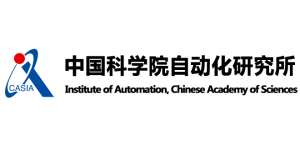From celestial movements to human life, the environment we live in contains complex and changing inner rules. Learning and mastering these rules is an important way for individuals to adapt to their environment and survive well, i.e., statistical learning. To date, however, most statistical learning research has been based on the individual level, with little exploration of the mechanisms of statistical learning in social settings, especially in joint action scenarios with others.In everyday life, people often need to identify and learn rules not only for their own task information, but also for acquiring task information from others.An example of this is the playing of music with four hands.To explore the above joint statistical learning phenomenon, the Professor Wang Jun's team in the School of Psychology of Zhejiang Normal University has conducted in-depth research in the above direction, and the related results were published in the international well-known journal of psychology, Cognition.
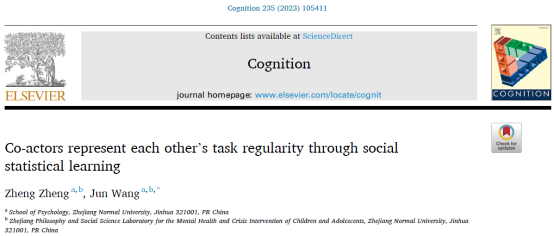

The study combines social learning transfer and the serial response-time paradigm in statistical learning.Experiment 1 used a joint practice scenario in which a stimulus stream containing two fixation sequences was assigned to two participants, in which each participant was required to practice only one of the fixation sequences in the stimulus stream without pressing a key in response to the fixation sequence of the peer task. After joint practice, individuals were able to acquire not only the rules of their own practice sequences (referred to as direct learning) but also the rules of their peers' practice sequences (referred to as indirect learning), as evidenced by a significant decrease in response time to both self- and others' task sequences.
To further explore and validate the cognitive mechanisms of social statistical learning, i.e., co-representation, this study systematically manipulated the scenarios of the exercise process, using respectivelySingle scenario(Single subjects completed the learning phase alone, Experiment 2), ,The presence of others(Completion of the learning phase with a passively observing peer, Experiment 3), ,Belief Scenarios(Imagine completing the learning phase with a partner, Experiment 4), ,Inconsistent Intent Scenario(Peers complete the color identification task without rules, Experiment 5)andBaseline scenario(Single subjects completed all phases alone, Experiment 6). It was found that subjects in the belief scenario (Experiment 4) showed the same socio-statistical learning effect thatThat is, direct learning and indirect learning effects were produced. In contrast, in the other scenarios (Experiment 2, Experiment 3, Experiment 5, and Experiment 6), subjects were able to acquire only their own task rules and were unable to acquire peer or task-irrelevant rules.
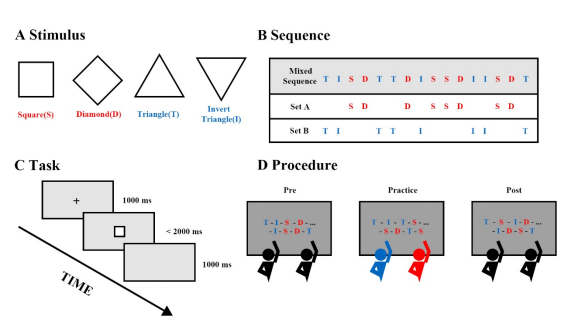

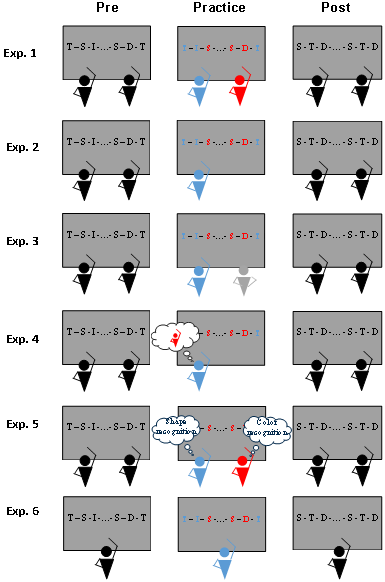

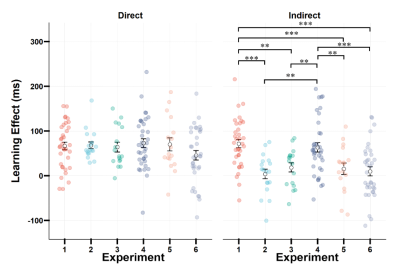

This study enriches existing statistical learning scenarios from a social interaction perspective and expands the representational content of existing common theories.Zheng Zheng, a doctoral student in Prof. Wang Jun's group, is the first author of the paper, and Prof. Wang Jun is the corresponding author of the paper. This study is supported by the Zhejiang Provincial Laboratory of Mental Health and Crisis Intervention for Children and Adolescents (21YJRC09ZD), which is a special project funded by the Zhejiang Provincial Laboratory of Cultivating Leading Talents in Philosophy and Social Sciences.
Zheng, Z., & Wang, J.* (2023). Co-actors represent each other's task regularity through social statistical learning. Cognition, 235. https://doi.org/10.1016/j. cognition.2023.105411
This article comes from the WeChat public number: EVERLOYAL




























